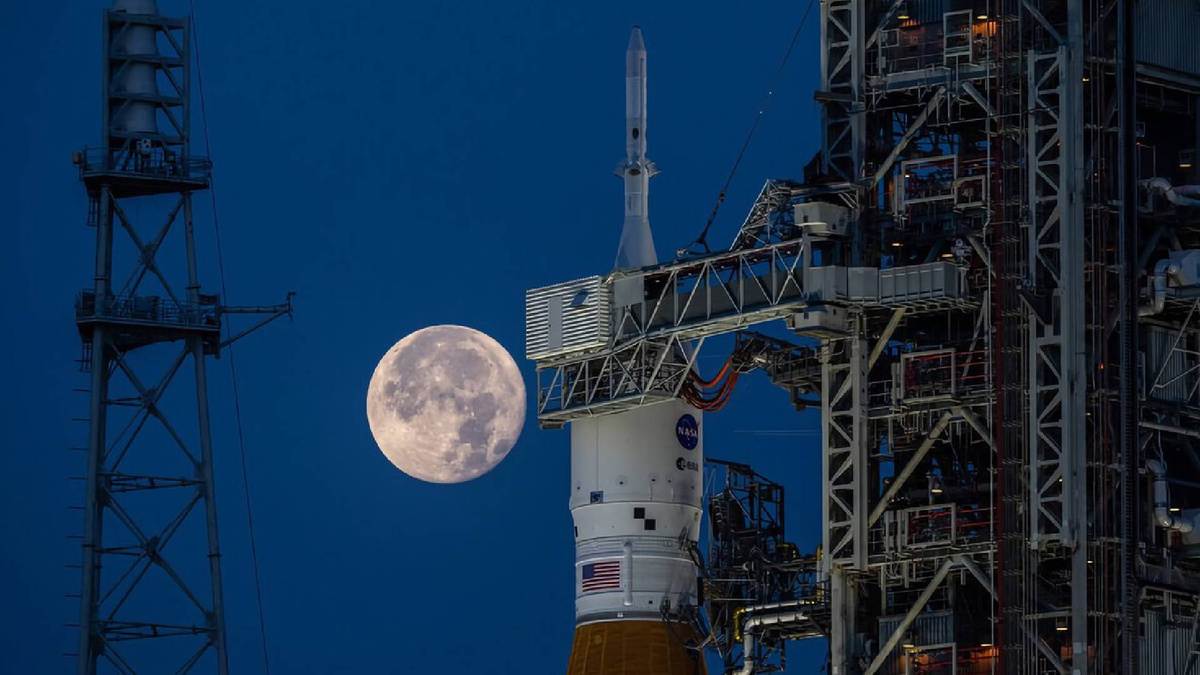A fragile return to the Moon
For the first time since Apollo, the United States faces a real risk of losing its crew-rated path to the Moon. Mounting technical, financial, and schedule pressures have turned a triumphant return into an uncertainty.
What once looked like streamlined progress now resembles a patchwork, with key systems maturing at different speeds. The result is a brittle architecture where a delay in one corner ripples across the entire program.
Artemis: ambition meets complexity
Artemis was conceived to deliver historic firsts, including landing the first woman on the Moon. Its architecture bundles the Space Launch System (SLS), the Orion crew capsule, and a lunar lander derived from SpaceX’s Starship.
The plan requires a choreography of docking, long-duration orbital operations, and propellant depots to feed a very large lander. Each component is hard; together, they are exquisitely complex.
After the Mars Sample Return setback, scrutiny of execution risk has intensified. NASA has explored contingencies, from a no-landing mission to testing Orion–Starship rendezvous in Earth orbit before attempting a lunar touchdown.
Hardware mismatch and operational risk
SLS is powerful but costly, leveraging legacy components at modern prices. Development ran to about $17 billion, and per-launch costs are estimated at $4.1 billion, straining annual budgets.
Orion is robust yet arguably oversized, carrying mass that complicates margins. Its planned Near-Rectilinear Halo Orbit (NRHO) adds trajectory intricacy that trades fuel for time, exposing crews to longer windows of risk.
Starship, meanwhile, was optimized for high-mass transport, not delicate lunar commutes. The lander’s height forces a 40‑meter elevator, complicating egress and rapid abort options during surface operations.
Timelines, cost, and political gravity
Sustaining a multi-element lunar stack requires relentless funding and cadence. Launch rates, depot readiness, and life-support certification must align across public and private teams.
Even SpaceX has flagged uncertainty about meeting early timelines, with on-orbit refueling its largest unknown. The difference between “works in principle” and “works on schedule” is where programs often slip.
“Ambition is easy. Execution is hard.” In a system this interdependent, small delays can cause big misses, pushing crewed landings beyond politically comfortable windows.
China’s pragmatic playbook
While the U.S. refines a sprawling architecture, China is advancing with a more direct approach. Its plan revolves around two CZ‑10 launches, smaller capsules, and shorter operational chains.
The Mengzhou spacecraft would ferry three astronauts to lunar orbit, with the Lanyue lander sending two crew to the surface and bringing them back. The timeline targets a first landing by 2030, with fewer refueling dependencies.
This strategy narrows the problem to the essentials—rendezvous, landing, ascent, and return—minimizing surface-to-orbit complexities. The faster cadence could shift global perceptions of lunar leadership.
The Achilles’ heel: in-orbit refueling
The Artemis lander depends on large-scale propellant transfers in space, a capability not yet proven at the required scale. It demands multiple launches, orbital aggregation, and tight thermal control.
Several refueling flights must succeed in quick succession, with cumulative risk rising for each step. If that chain slips, 2026 becomes optimistic, and 2028–2030 more plausible.
NASA’s fallback concepts—like Earth-orbit demos or a no-landing crew sortie—could buy time, but they don’t deliver the singular milestone the public expects: boots on the Moon.
What it would take to regain momentum
- Reduce architectural coupling by pursuing a simpler, interim lunar lander that needs fewer refueling events.
- Accelerate end-to-end refueling demonstrations with clear, public milestones and pass/fail criteria.
- Trim Orion mass where feasible and revisit NRHO trade-offs to increase operational margin.
- Increase SLS launch cadence with smarter production flows to lower unit costs.
- Strengthen international and commercial partnerships to share risk, schedule, and innovation.
The stakes beyond symbolism
A successful landing is not merely a flag-planting exercise. It seeds a logistics economy, validates new in-space infrastructure, and sets norms for lunar operations.
If the United States cannot field a reliable crewed pathway, it risks ceding standards, supply chains, and momentum to competitors. That shift would echo for decades in science, industry, and security.
The path forward is still open, but the window is narrowing. By focusing on demonstrable capabilities over sprawling ambitions, the U.S. can still turn Artemis from a fragile edifice into a resilient, repeatable system.

